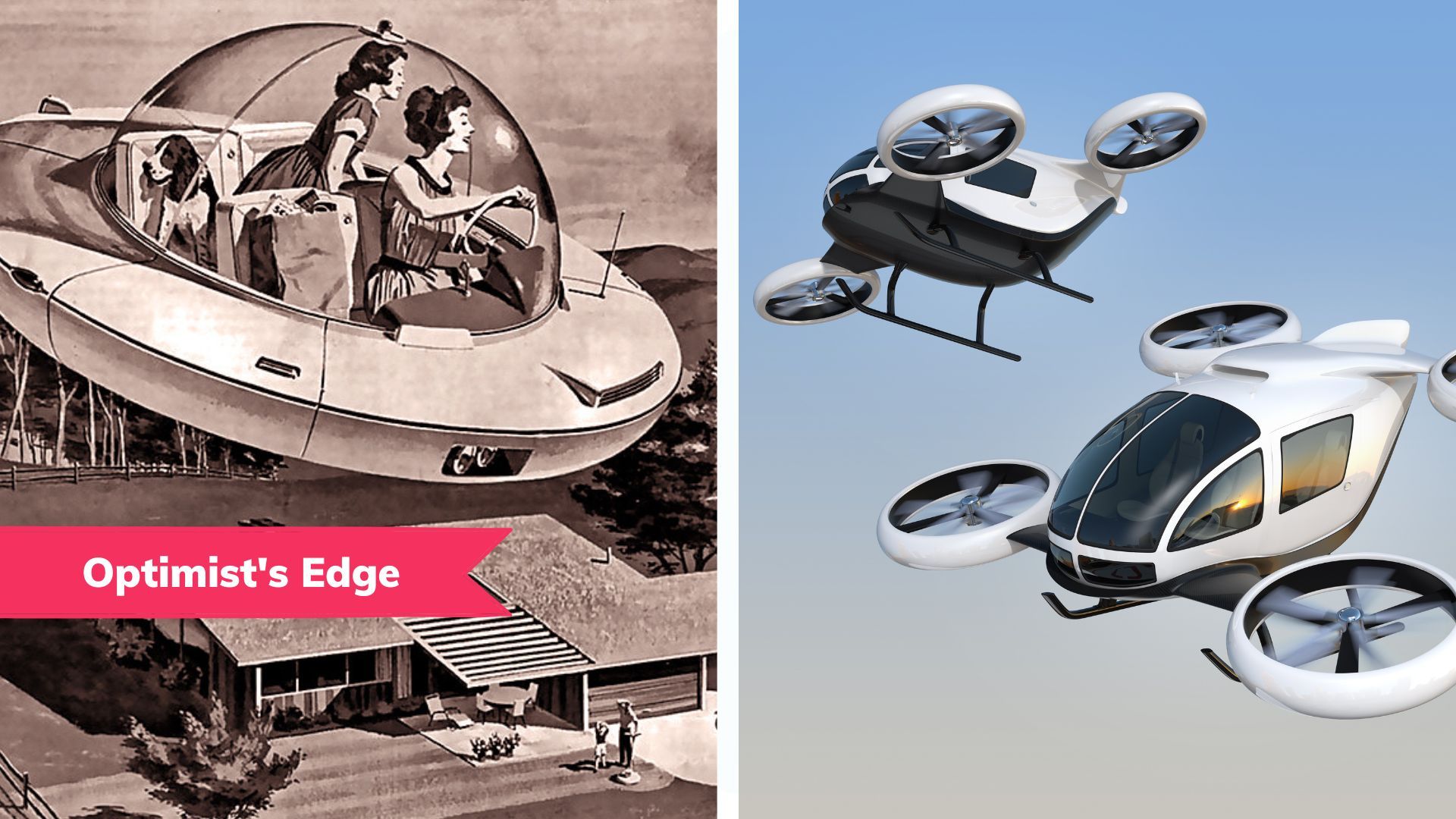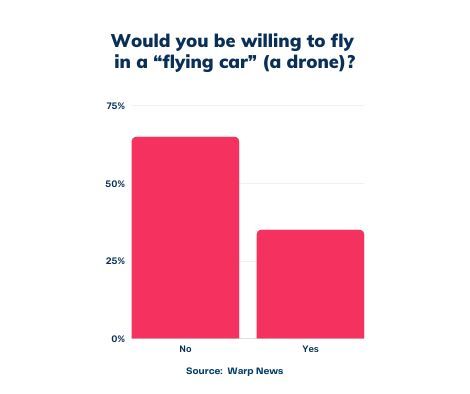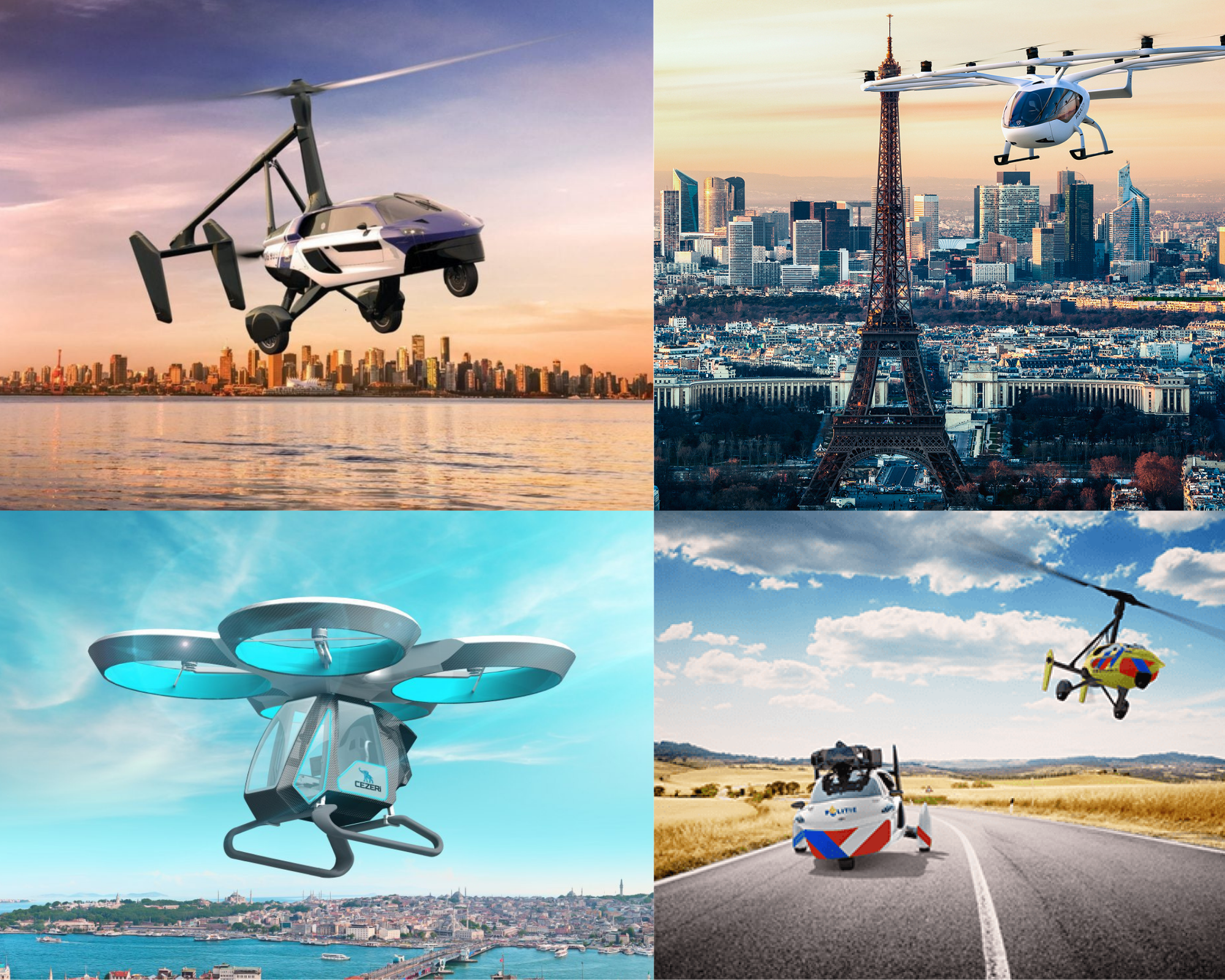
💡 Optimist's Edge: Flying cars from science fiction to science fact
Science fiction is becoming science fact as flying cars will soon be providing straight A to B, zero emissions, transportation.
Share this story!
Flying cars are one of the science fiction classics but also a symbol of how the future has proved to be very different from the imagination. So much so that the question "Where's my flying car?" has become emblematic of the wider failure of many modern technologies to match futuristic visions.
📉 What people think
Flying cars might be here soon, but how do people feel about flying in one? Only 35 percent say they are willing to, and almost two-thirds, 65 percent, say no.

📈 Here are the facts
Aero Taxis
To revolutionize urban mobility, the goal is to develop electric and modular passenger drones called eVTOL, natively fully electric aircraft with the ability to take off and land vertically, driven by artificial intelligence or a human pilot and integrated into a next-generation hub network.
For example, the German company Volocopter is developing fully electric aircraft with 18 rotors, the Turkish Baykar is a quadcopter, while Lilium is a fixed-wing model. Giants such as Airbus, Boeing, Hyundai, Audi, and Uber are also investing heavily in research in this field.
Flying cars just like in sci-fi movies
Don't worry, there will also be flying cars just as you imagine them and that you can drive yourself! These are car models just like the classic ones, but with retractable wings allowing both driving on the road and, after a short stop to let out wings and propeller, to take off flying for miles and miles.
Just like planes, the Dutch company PAL-V Liberty has built a three-wheeled design to offer advantages in mechanical design and safety during landing. With a more classic design, the Slovakian company Klein Vision promises to fly up to 1,000 km at 170 km/h and at a maximum height of 2,500 meters, after just two minutes and 15 seconds to transform from a car into an airplane.
Here's a short video showing what it will be like to drive a real flying car just like in the movies.
When can we have flying cars?
We may actually already be flying like in the movies right now. The flying car of the Swedish company Jetson is already available, even if it only allows you to fly for a maximum of 20 minutes.
For more performing, production-ready models such as Klein Vision or PAL-V Liberty, it will probably be necessary to wait until 2024. However, these are not simple projects, but prototypes have already been tested and approved for road admission and with flight certification.
As for aero taxis, Volocopter and the French capital are working on an unprecedented mobility project that should be ready in time for the 2024 Olympic Games, transforming Paris into a leading model for urban air mobility.
Morgan Stanley predicted that autonomous aircraft could be common by 2040 when the sector could be worth $1.5trillion.

💡 Optimist's Edge
Several elements are making flying cars not so distant or sci-fi right now. New technologies becoming commonplace make them technically feasible, such as more powerful and cheaper batteries, advanced smart manufacturing processes, and artificial intelligence to control multiple security systems.
The timing is also right, as a transport revolution is needed and forthcoming, a change that includes a new fuel (preferably electric) and new city infrastructures.
Air mobility could be a solution to urban travel issues, allowing us to reduce traffic congestion and accidents, without requiring new complex land infrastructures such as roads or railways. Through urban flight, it will be possible to connect passengers with key transport hubs such as railway stations and airports in a seamless, faster, smoother, quieter, eco-sustainable, and more convenient way.
Furthermore, flying cars allow responding quickly to health emergencies (e.g. blood or organ transport) or police and firefighters' needs.

👇 How to get the Optimist's Edge
A sector that starts from scratch, like that of flying cars, presents many opportunities.
❓ So, how do you get the most out of this knowledge?
- Learn to fly! Join the PAL-V Flight Academy to learn how to fly the first flying cars. The course prepares you to obtain the PPLG (Gyroplane Private Pilot License) by combining hands-on flights with related theoretical and simulation exercises.
- Be a pioneer! Order Pioneer Models, not exactly cheap but not impossible to obtain either. You can order Jetson's first flying car model for $92,000 for delivery in 2023 (all 2022 production is sold out) or the Pioneer PAL-V model at €299,000 for 2024.
- Make the future come sooner! Make flying cars your job, engaging in research to design the first production-ready models of aero taxi Volocopter, Lilium or Baykar, or the pioneering flying car PAL-V Liberty
- Invest! According to Morgan Stanley projections, the flying car could become a big deal. So you can try to invest in the most interesting and advanced companies such as Volocopter, Baykar, PAL-V Liberty, Klein Vision, Jetson, Lilium, Airbus, Boeing, Hyundai, Audi or Uber
You now have an advantage because you have gained this knowledge before most others –